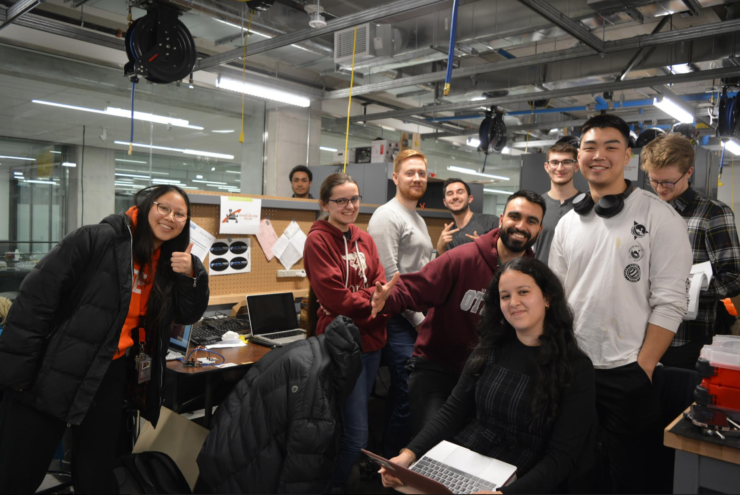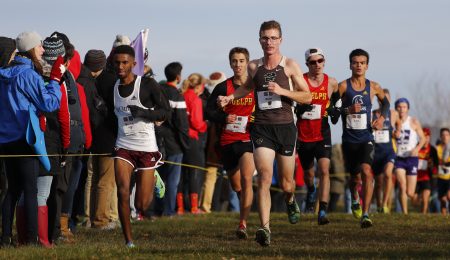U of O’s Mars Rover Team designed a rover for system acceptance review competition
On Feb. 18, NASA successfully landed the Perseverance Rover on Mars — the newest and most advanced technology to enter the red planet’s orbit.
It is this sort of event that temporarily reminds us of the wonders of space exploration. But for a team of students at the University of Ottawa, thoughts about space exploration are constant.
In fact, the U of O’s Mars Rover Team is so interested in space technology that they created their own Mars Rover project.
Hridyansh Sharma, a fourth-year mechanical engineering student and co-captain of the Mars Rover Team, explained, “it was in 2018 when NASA released an open source version of their rover.”
In other words, NASA created a well-documented model of the Rover intended for high school and university students who want to construct models they can modify with accessible components and technology.
Shortly after NASA released this information, the U of O’s Mars Rover Team decided to take on the challenge. Eventually, they entered their rover in the 2020 and 2021 University Rover Challenge (URC), an international competition normally held in the deserts of Utah.
To qualify for the URC2021 Finals, the team submitted their most recent deliverable, the System Acceptance Review (SAR). However, on March 25, URC organizers announced that that competition will not take place in-person due to COVID-19, and it is still unclear how the virtual event will unfold.
Cameron Paul, current co-captain of the team and fourth-year mechanical engineering student has been on the team since 2019.
“[We are] a very unique team,” Paul said. “There isn’t any other team like it being able to design something that’s supposed to go on another planet.”
A complex project with diverse functions
Because this is a complicated project, the team needs students from various academic backgrounds to assemble a functional rover.
Students involved in the project study software engineering, mechanical engineering, electrical and computer engineering, physics, and other key fields that help in the development of the model.
As per the University Rover Challenge guidelines the U of O’s Mars Rover Project must perform four different functions.
Life detection, to collect soil samples and then perform experiments on them, is one of the four functions the model must perform. NASA does experiments on soil to determine if it can support life or can be used to support life.
The model rover must also perform the extreme retrieval function. So, the team must remotely control the rover over a mix of different ‘mars-like’ terrain and pick things up from the ground.
At the competition, the U of O’s rover will have to “collect certain items along the way, like a hammer for example, and drop them off at a specific location,” explained Sharma.
Equipment servicing, the third function the rover should perform, means the robotic arm onboard the rover can flip a switch, type on a keyboard, and lift a weighted object.
Autonomous traversal, where the rover needs to drive itself over terrain as it searches for checkpoints, is the final and most challenging function to build.
Perseverance and looking ahead
Sharma said, for this year’s competition, the U of O team “signed-up to be recognized as an engineering team under the John McEntyre Team Space (JMTS)” because this is where they built the rover.
The JMTS is a space on U of O’s campus where students collaborate and prepare for a variety of international STEM competitions.
However, because the JMTS is closed to the public in accordance with Ontario’s COVID-19 protocols, the team cannot access their model, nor can they access JMTS equipment — this complicates how they prepare for the competition.
Nonetheless, the team of students rely on their creativity to develop their project without the tools they would normally need.
“Not being able to access the rover, we were given the idea to design a little more,” said Paul.
“We weren’t at school and didn’t have access to the school facilities,” explained Sharma. “So, [Paul] bought a 3D printer, and some others bought one too.”
Also, the team largely relies on Computer Aided Design, which is design software, to model the rover.
Not only did these tools help them through the development of their project, it was also the ingenuity and flexibility of each team member.
“Many of the team members wear many hats in the rover’s [development], which means everyone is involved in all components of the rover,” said Sharma.
Even though they could not work on their project in person, the team got to know each other better through virtual meetings. Now, they are more friends than they are teammates.
The team continues to integrate new students on the rover project. Interested students can join the team via their website.





